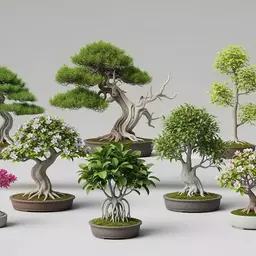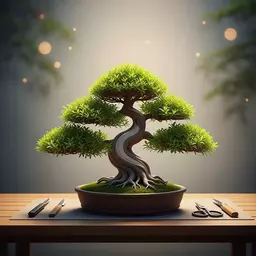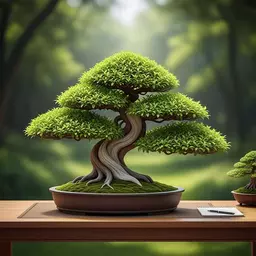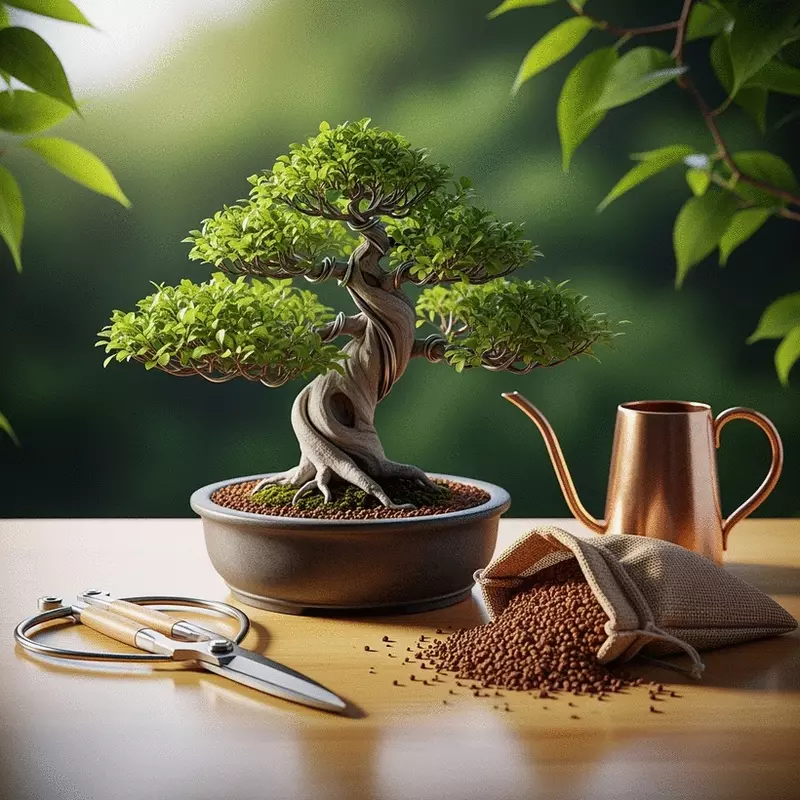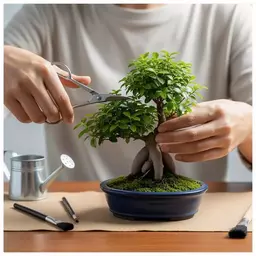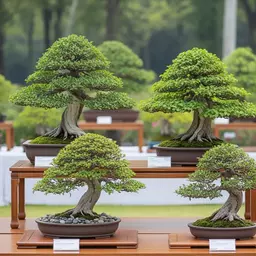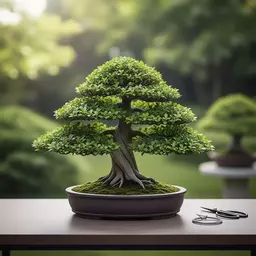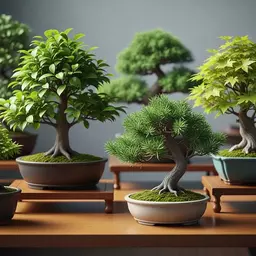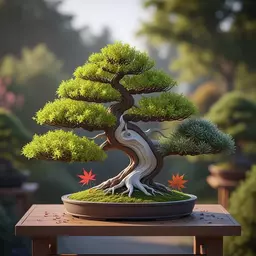Bonsai Choices: Indoor vs Outdoor
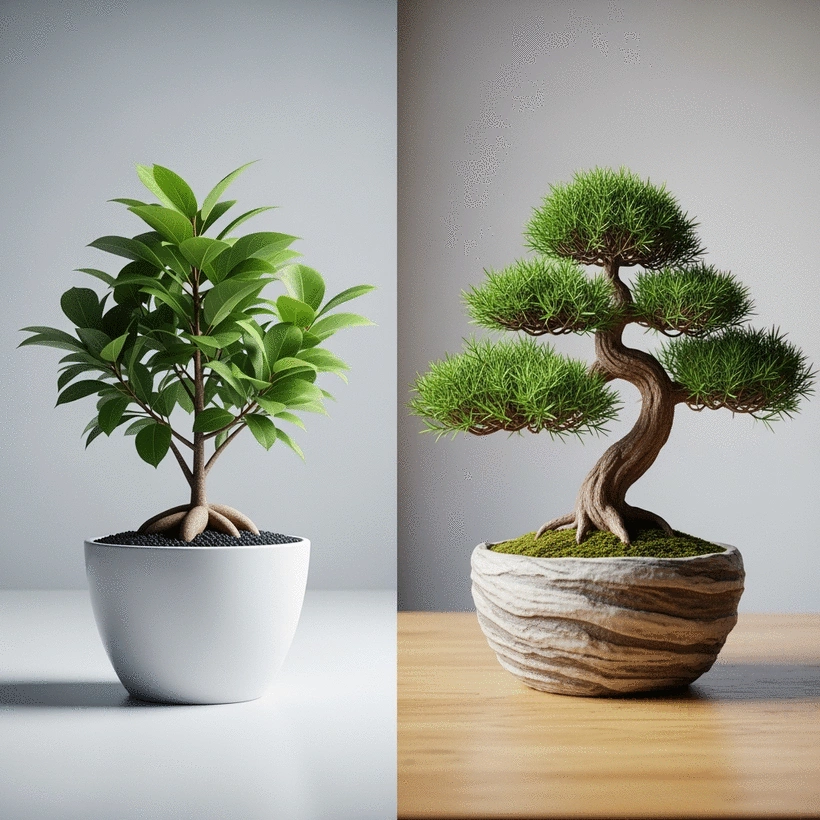
Have you ever wondered how the environment impacts the health of your bonsai tree? From light to humidity, every detail matters in the art of bonsai cultivation. Understanding these factors can transform your bonsai experience into a flourishing journey.
What You Will Learn
- The importance of identifying the specific needs of your bonsai species for optimal growth.
- The differences between indoor and outdoor bonsai cultivation and their unique challenges.
- Key environmental factors like light, humidity, and temperature that affect bonsai health.
- Common mistakes to avoid, ensuring a successful bonsai cultivation journey.
Key Factors in Bonsai Environment & Common Mistakes
Creating the ideal environment for your bonsai involves understanding its specific needs, while mindful avoidance of common errors ensures its long-term health and beauty. For a comprehensive guide on getting started, consider our bonsai care guide for beginners.
Environmental Factors for Optimal Growth
Common Beginner Mistakes to Avoid
Identifying the Right Environment for Your Bonsai
Choosing the right environment for your bonsai is crucial for its health and beauty. Whether you’re cultivating indoors or outdoors, it's essential to understand the unique needs of your bonsai species. Each tree has specific requirements to thrive, and setting the right stage can make all the difference in its growth.
At Shire Bonsai, I’ve seen how the right environment can transform a small tree into a stunning living masterpiece. Taking the time to identify the best conditions for your bonsai will lead to a more fulfilling and successful cultivation experience!
Understanding Indoor vs. Outdoor Bonsai Cultivation
Indoor and outdoor bonsai cultivation presents distinct challenges and advantages. Indoor bonsai trees benefit from controlled environments, which can shield them from harsh weather. However, they often require extra attention to light and humidity levels. On the other hand, outdoor bonsai trees can enjoy natural sunlight and seasonal variations, but they must be resilient to shifting climates. To learn more about seasonal adjustments, refer to our seasonal care guide for your bonsai.
- Indoor Bonsai: Typically more forgiving, suitable for beginners, and able to thrive in smaller spaces.
- Outdoor Bonsai: Often more diverse in species, allowing for broader aesthetic appeal and seasonal changes.
Understanding these differences will help you make the best choice for your bonsai journey. For example, consider where you’ll be spending most of your time caring for your tree—inside or out—and what you’re hoping to achieve with your bonsai.
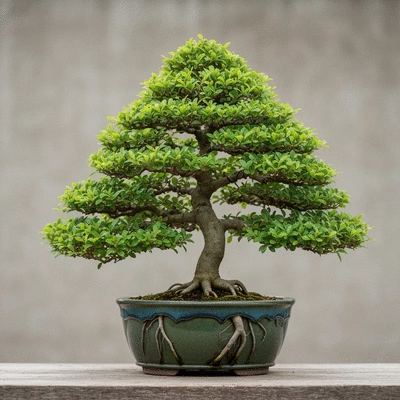
Factors to Consider in Your Growing Environment
When setting up your bonsai garden, there are a few key factors to consider: light, humidity, and temperature. These elements directly affect how your bonsai grows and reacts to its environment. By paying attention to these details, you can create a nurturing space for your plant.
- Light: Ensure your bonsai receives adequate light, whether through windows, grow lights, or outdoor settings.
- Humidity: Indoor environments typically have lower humidity, so consider using humidity trays or misting your trees.
- Temperature: Be mindful of extreme temperatures and drafts, as they can stress your bonsai.
Each of these factors plays a significant role in creating a thriving bonsai. By taking the time to set up the right environment, you’re investing in your bonsai’s future health!
Light Requirements for Optimal Bonsai Growth
Light is essential for your bonsai's photosynthesis and overall well-being. Different bonsai species have varying light needs. Some thrive in direct sunlight, while others prefer indirect light. For instance, a Ficus enjoys bright light but can adapt to lower conditions, whereas a Juniper prefers full sun exposure.
- Direct sunlight: Ideal for outdoor bonsai or light-loving indoor species.
- Indirect light: Best for species that may scorch in intense conditions.
- Artificial light: Consider using grow lights if natural light is insufficient.
Finding the right balance will ensure your bonsai remains healthy and vibrant. I always recommend observing your tree’s response to its light environment and adjusting as necessary!
Humidity Levels and Temperature Preferences for Different Bonsai Species
Humidity and temperature preferences vary significantly among bonsai species. For instance, tropical bonsai like a Ginseng Ficus prefer humid conditions, while hardy varieties like a Chinese Elm can withstand cooler temperatures. Understanding these preferences is key to successful cultivation.
- Tropical species: Require higher humidity levels and warmer temperatures.
- Deciduous species: Thrive in cooler temperatures and can tolerate seasonal changes.
- Subtropical species: Typically need a moderate climate with consistent humidity.
Being mindful of these environmental factors will greatly enhance your bonsai care routine. With the right conditions, your bonsai will flourish and bring joy to your space!
Pro Tip
When cultivating your bonsai, remember that patience is key. Regularly observe your tree's growth patterns and adjust its care accordingly. For instance, if you notice your bonsai stretching towards the light, it might be time to reposition it or adjust your lighting setup. This attentive care can lead to healthier growth and a more beautiful tree!
Common Mistakes to Avoid in Bonsai Cultivation
As a bonsai enthusiast, I've seen many beginners dive headfirst into this rewarding hobby only to stumble on some common pitfalls. Understanding these frequent mistakes can save you time, effort, and even the health of your beloved trees. Here are some of the top errors I encourage you to watch out for:
- Overwatering or underwatering your bonsai
- Neglecting to research specific species needs
- Improper pruning techniques and timing
- Failing to adjust care according to seasonal changes
Each of these mistakes can lead to frustrating outcomes, but they are also easily avoidable with a bit of knowledge and care. By taking the time to learn about your particular bonsai species and its unique requirements, you're already on your way to a thriving miniature masterpiece!
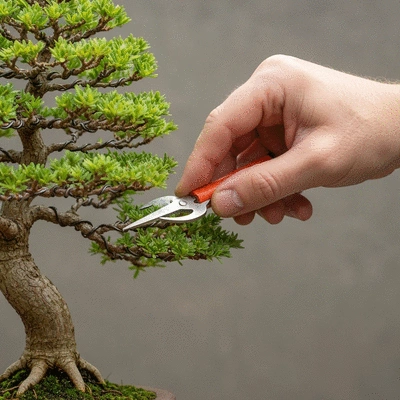
Identifying and Addressing Frequent Beginner Errors
One of the most common errors I notice is the tendency to treat all bonsai the same. Each species comes with its own set of needs when it comes to light, water, and soil. For example, tropical varieties need more humidity, while others can thrive in drier conditions. Let’s break down some of these beginner mistakes further:
- Ignoring sunlight needs: A Ficus, for instance, flourishes in bright, indirect light, while a Juniper prefers full sun.
- Inconsistent watering: Establish a routine, and don’t let your bonsai dry out completely or sit in water.
- Improper repotting: Remember to repot when necessary, usually every couple of years, to replenish nutrients.
- Neglecting pests: Keep a close eye for signs of infestation, as early detection can save your bonsai.
By identifying these frequent errors and adjusting your care methods accordingly, you can create a much healthier environment for your bonsai trees. Every mistake is a learning opportunity on this fascinating journey!
Real-Life Examples of Successful Bonsai Care
In my many years of nurturing bonsai, I've encountered numerous cases that highlight the importance of proper care. One story that stands out is of my friend Jake, who initially struggled with a beautiful Japanese Maple. His first mistake was placing it in a low-light area, which left his tree unhappy and stunted. After a few adjustments, including relocating it to a brighter spot and adopting a consistent watering schedule, the transformation was remarkable!
- After just a few weeks, the leaves began to unfurl beautifully.
- Within months, Jake’s Maple had grown lush and vibrant, showcasing its stunning fall colors.
- This experience has become a great reminder that patience and the right environment can work wonders.
Stories like Jake's serve as a testament to the beauty of bonsai cultivation. They remind us that overcoming challenges with thoughtful care can lead to spectacular results. For more detailed guidance on techniques, explore bonsai pruning techniques for beginners.
Next Steps for Your Bonsai Journey
As we wrap up this section, I hope you're feeling inspired to continue your bonsai adventure! With a deep understanding of common mistakes, you're now ready to build on your knowledge and skills. Let's explore your next steps together!
Recap of Key Points
Here is a quick recap of the important points discussed in the article:
- Understand the specific needs of your bonsai species for optimal growth.
- Indoor bonsai require controlled light and humidity, while outdoor bonsai benefit from natural conditions.
- Pay attention to light levels, humidity, and temperature to create a nurturing environment.
- Avoid common mistakes like overwatering, improper pruning, and neglecting seasonal care.
- Learn from real-life examples to enhance your bonsai care techniques.
Frequently Asked Questions (FAQs)
Q: What are the most important environmental factors for bonsai health?
A: The most important environmental factors are light, humidity, and temperature. Each bonsai species has specific requirements for these, and understanding them is crucial for optimal growth.
Q: What is the main difference between indoor and outdoor bonsai cultivation?
A: Indoor bonsai benefit from controlled environments but require attention to light and humidity. Outdoor bonsai enjoy natural sunlight and seasonal changes but need resilience to shifting climates.
Q: What are common mistakes beginners make in bonsai care?
A: Common mistakes include overwatering/underwatering, neglecting to research species-specific needs, improper pruning techniques, and failing to adjust care for seasonal changes.
Q: How do I know if my bonsai is getting enough light?
A: Observe your tree's growth. If it's stretching towards a light source or its leaves are dull, it may need more light. Adjust its position or consider using grow lights.
Q: Why is humidity important for bonsai, especially indoors?
A: Indoor environments often have lower humidity, which can stress bonsai, especially tropical species. Humidity trays or regular misting can help maintain adequate moisture levels around the tree.
